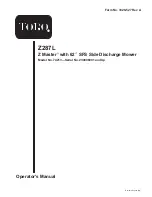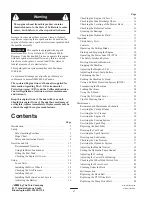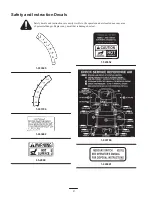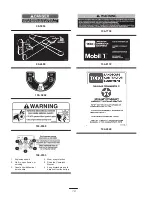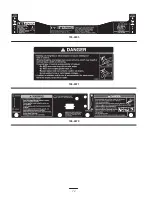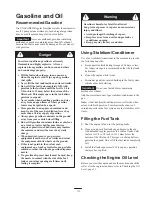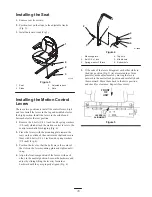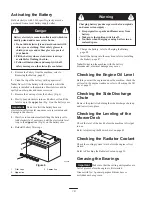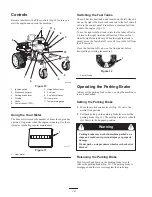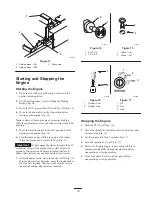
4
Training
•
Read the Operator’s Manual and other training material.
If the operator(s) or mechanic(s) can not read English it
is the owner’s responsibility to explain this material to
them.
•
Become familiar with the safe operation of the
equipment, operator controls, and safety signs.
•
All operators and mechanics should be trained. The
owner is responsible for training the users.
•
Never let children or untrained people operate or
service the equipment. Local regulations may restrict
the age of the operator.
•
The owner/user can prevent and is responsible for
accidents or injuries occurring to himself or herself,
other people or property.
Preparation
•
Evaluate the terrain to determine what accessories and
attachments are needed to properly and safely perform
the job. Only use accessories and attachments approved
by the manufacturer.
•
Wear appropriate clothing including hard hat, safety
glasses and hearing protection. Long hair, loose
clothing or jewelry may get tangled in moving parts.
•
Inspect the area where the equipment is to be used and
remove all objects such as rocks, toys and wire which
can be thrown by the machine.
•
Use extra care when handling gasoline and other fuels.
They are flammable and vapors are explosive.
•
Use only an approved container
•
Never remove gas cap or add fuel with engine
running. Allow engine to cool before refueling.
Do not smoke.
•
Never refuel or drain the machine indoors.
•
Check that operator’s presence controls, safety switches
and shields are attached and functioning properly. Do
not operate unless they are functioning properly.
Operation
•
Never run an engine in an enclosed area.
•
Only operate in good light, keeping away from holes
and hidden hazards.
•
Be sure all drives are in neutral and parking brake is
engaged before starting engine. Start the engine only
from the operator’s position.
•
Never raise deck with the blades running.
•
Never operate without the PTO shield, or other guards
securely in place. Be sure all interlocks are functioning
properly.
•
Never operate with the discharge deflector raised,
removed or altered, unless using a grass catcher.
•
Do not change the engine governor setting or overspeed
the engine.
•
Stop on level ground, lower implements, disengage
drives, engage parking brake, shut off engine before
leaving the operator’s position for any reason including
emptying the catchers or unclogging the chute.
•
Stop equipment and inspect blades after striking objects
or if an abnormal vibration occurs. Make necessary
repairs before resuming operations.
•
Keep hands and feet away from the cutting units.
•
Never carry passengers and keep pets and bystanders
away.
•
Be alert, slow down and use caution when making
turns. Look behind and to the side before changing
directions.
•
Slow down and use caution when crossing roads and
sidewalks. Stop blades if not mowing.
•
Be aware of the mower discharge direction and do not
point it at anyone.
•
Do not operate the mower under the influence of
alcohol or drugs.
•
Use extreme care when loading or unloading the
machine into a trailer or truck.
•
Use care when approaching blind corners, shrubs, trees,
or other objects that may obscure vision.
Slope Operation
•
Do not mow slopes greater than 15 degrees.
•
Do not mow near drop–offs, ditches, steep banks or
water. Wheels dropping over edges can cause rollovers,
which may result in serious injury, death or drowning.
•
Do not mow slopes when grass is wet. Slippery
conditions reduce traction and could cause sliding and
loss of control.
•
Do not make sudden turns or rapid speed changes.
•
Use a walk behind mower and/or a hand trimmer near
drop–offs, ditches, steep banks or water.
•
Reduce speed and use extreme caution on slopes.
•
Remove or mark obstacles such as rocks, tree limbs,
etc. from the mowing area. Tall grass can hide
obstacles.
Summary of Contents for Z287L Z Master
Page 6: ...6 Slope Chart ...
Page 7: ...7 ...
Page 12: ...12 103 2433 106 6571 106 6570 ...
Page 55: ...55 ...

